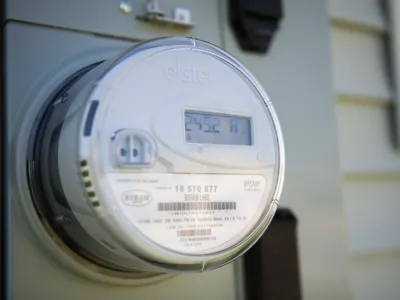Xcel grid modernization efforts move forward: CUB watching for consumer protections

Published June 29, 2020
The Minnesota Public Utilities Commission (PUC) recently gave Xcel Energy the go-ahead for significant investments to modernize its local electricity grid.
On May 29, the PUC approved Xcel’s plan to install smart meters for customers as well as the related communications network, and invest in additional advanced technologies in their electricity distribution system. These are key investments for moving Xcel’s electricity system forward. They also require oversight to prevent cost overruns and make sure that potential customer benefits become reality.
A modernized grid is a key element for advancing Minnesota’s energy goals. Smart electricity meters and the technologies that enable their advanced functionalities can support the integration of higher levels of renewable energy, empower customers to make choices about their electric service, and enable customers to provide clean and cost-effective resources to a utility system, like demand response. Done right, grid modernization can make the electricity system more reliable, more flexible, cleaner, and less expensive.
Based on how these kinds of modernization investments have gone in many other places, we also know that these investments are quite complex and can run far over budget. The promised customer benefits sometimes don’t materialize.
In our filed comments, CUB argued that the should PUC approve Xcel’s proposal to move forward with smart meters and the related communications infrastructure but set clear consumer protections in doing so. (CUB’s and all parties’ filings can be found in PUC Docket 19-666, if you’d like to dig into the details.) We asked that Xcel be required to enable functionalities in their new meters to allow customers to access and use their own data, and to develop an Advanced Rate Design roadmap with specifics about how and when Xcel plans to roll out demand response and other options for customers. We asked the PUC to set cost caps for the investment. We also recommended that, when it comes time for Xcel to recover the costs of these investments from its customers, cost recovery be done through a rate case. (I’ll say more about that below.)
At its May 29 meeting, the PUC gave Xcel the green light to move forward with smart meters (aka advanced metering infrastructure, or AMI), the associated communications network (field area network, or FAN), and additional grid modernization investments, at an estimated cost of nearly $600 million. They will require Xcel to develop a rate design roadmap similar to what we recommended. The PUC will consider what cost caps, performance metrics, and other consumer protections should be applied at a future date. They did not adopt our recommendations to require certain access for customers to the data generated by their new meters.
The PUC did not address how the costs may be recovered. However, they granted “certification” for the projects, which gives Xcel permission to seek cost recovery from customers in a stand-alone proceeding rather than a rate case, and to include the costs on a rider at the bottom of customers’ bills rather than in base rates. This may seem like a technicality, but it is important for consumer protection.
A rate case, in which new base rates are set for a utility, allows for full consideration of how much these investments cost and also how much money they save Xcel, so that customers don’t overpay. It also allows the PUC and parties like CUB to understand the full amount of bill impacts that customers can expect when all of the various cost increases and savings are added together. And Xcel, in recent years, has chosen to operate under multi-year rate plans, which set customers base rates for multiple years into the future. In theory, this gives the utility a good idea of how much money it will collect and so gives it an extra incentive to cut costs. If Xcel is able to put this half-billion dollars in new costs into a rider mid-way through a multi-year rate plan, that would seriously undercut the purported purpose of the multi-year rate plan for containing costs. The PUC explicitly clarified that its decision was “not pre-judging whether costs will be recovered through riders or base rates.” However, granting certification allows Xcel to request rider recovery.
The grid modernization technologies that are moving forward are a key part of making Xcel’s system cleaner and unlocking options and savings for customers. Going forward, CUB will keep our eye on the costs of these investments, that their functions are being enabled to benefit customers, and that Xcel recovers reasonable costs in a way that protects their customers.